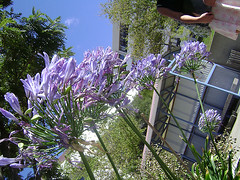This tutorial seeks to look at cameras, the difference between old and new, ethical issues as well as how photos can be used and utilized on photo storage websites.
A new technology is rarely superior to an old one in every feature”. Briefly discuss this statement in relation to digital camera technology. What would you consider to be some of the pluses and minuses digital camera technology holds in relation to more traditional film based cameras?
This statement compares whether getting a new camera it worth the value of keeping your old camera and asks you to weigh up the benefits. In the debate regarding digital cameras versus film cameras there are many positive and negatives in each however depending on what you want personally in a camera is what ultimately makes the better choice.
Film cameras are more expensive to develop photos as you cannot see the photo before it is printed therefore not being able to delete the bad shots before having to pay for them This is a huge strength in digital cameras as you can see the photos before the are developed allowing you to delete any "uglies".
There is however a risk in digital cameras that photos may be deleted mistakenly which is impossible to to on a film camera.
Both cameras are run by batteries however a digital camera needs a memory stick and a film camera obviously needs films.
Both options are perfectly fine,each with their own pros's and con's. Its just up to what the consumer likes best!
List some of the ways that digital images can be stored transferred and manipulated using other communications technology.
Digital images can be stored on computers or on phones and can be transferred through the use of emails, pxt or uploaded onto blogs or social networking site. Photos can also usually be manipulated on computer software such as photoshop where you can manually crop, adjust the colour, remove read eye etc to make the perfect shot.
Given the prevalence of image capturing devices, and thinking about the issues discussed in tutorial one, consider what sort of ethical issues may arise with their use.
Once again in relation to tutorial one the ethical issue is that once the photo is shared you have no control over it. For example if you uploaded a photo onto the internet and then changed your mind and deleted it, the photo would still exist and potentially be in someone Else's hands that you haven't given permission to. In regards to usingg camera's in Occupational therapy obviously the subject needs to give informed consent before those photos are taken and it must be treated as confidential information unless specified otherwise.
Briefly discuss some of the ways that digital images could, or are, being used in occupational therapy practice (include reference and links to any web sites, or blogs you might come across)
Photos can be of great help when documenting or applying for funding and in my most recent placement in community physical taking pictures was common.
Here are some examples of these:
Taking a picture of the veranda to remember where to draw steps on a plan.
Taking a picture of a client who needed an automatic door system trying to get into her home as justification for funding.
Taking a picture of damaged equipment as part of documentation.
Provide a brief summary of the services offered by Flickr.com
"Flickr is a way to get your photos and videos to the people who matter to you.
Upload
Upload from your desktop, send by email, or use your cameraphone.
Edit
Get rid of red eye, crop a photo, or get creative with fonts and effects!
Organize
Use collections, sets, and tags to organize your photos and videos.
Share
Use groups and privacy controls to share your photos and videos.
Maps
Share where your photos and videos were taken, and see photos and videos taken near you.
Make Stuff
Sexy cards, photo books, framed prints, Target pick up, DVDs, etc.
Keep in Touch
Get updates from family and friends."
Retreived on 5th June 2009 from http://www.flickr.com/tour/
Name one other photo storage website which offers a service similar to Flickr.com
Social networking sites such as facebook, my space and Bebo also allow you to upload photos and share them.
Explain what the difference is between a digital and an optical zoom
An optical zoom is more clear as it actually zooms in on the picture however a digital zoom just expands/widens or enlarges the picture. This causes the blurriness to increase the more you zoom.
Explain what is meant by the term megapixel
Megapixels refer to the amount of squares that will sit on the matt of your photo therefore the higher amount of pixels equals the higher quality of photo. For a good clear photo 6 or 7 megapixels is sufficient.
